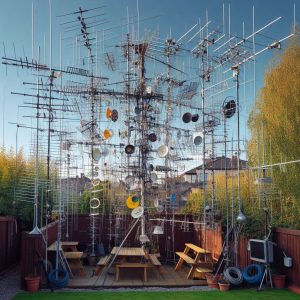Picture this: You’re deep in a mountain valley, surrounded by dense forest, or maybe navigating rolling hills. Your trusty radio, usually a champ, suddenly feels useless. Signals vanish like ghosts. Frustrating, right? Enter the NVIS Antenna – Near Vertical Incidence Skywave – radio’s ingenious answer to terrain that laughs at normal signals. Think of it not as a long-distance runner, but as a master of the local area sky-dive!
What’s the NVIS Magic Trick?
Most HF antennas aim their energy “outward”, skimming the horizon to bounce signals off the ionosphere for hundreds or thousands of miles (Skywave propagation). NVIS flips the script. It fires its signal almost straight up (high take-off angle). This energy hits the ionosphere directly overhead and rains back down within a relatively short radius – typically 30 to 300 miles, perfectly blanketing the area where traditional ground wave dies and normal skywave overshoots.
Why It’s Like a Radio Magic Carpet:
1. Conquers Terrain: Mountains, valleys, dense forests, urban canyons? NVIS laughs in their face. Its signal comes “down” from above, bypassing obstacles that block ground-hugging waves. It turns your “radio dead zone” into your personal coverage kingdom.
2. Solid Local/Regional Coverage: Need reliable comms within a state, a county, or a disaster zone? NVIS provides remarkably consistent signal strength across its coverage area. No more “I hear you faintly… now you’re gone!” frustration.
3. Simple & Low: Forget needing a 100-foot tower! Most NVIS antennas are simple wire dipoles or loops strung just 5 to 30 feet off the ground. Easy to deploy quickly, especially in emergencies or field operations. Perfect for portable ops.
4. Loves the Lower Bands: NVIS thrives on the 3-10 MHz range (primarily 80m & 40m ham bands, 60m, and military NVIS freqs). These frequencies bounce best for the overhead ionospheric dive.
5. Stealthy(ish): Being low and often made of wire, they are less visually obtrusive than giant beam antennas.
But Wait, It’s Not All Rainbows and Perfect Signals (The Reality Check):
1. Strictly Local/Regional: Don’t expect to chat across continents. NVIS is purpose-built for the “near” in Near Vertical. Trying DX (long distance) with a pure NVIS setup is like trying to hammer a nail with a feather duster.
2. Band Dependent: It *only* works well on specific lower frequencies where the ionosphere cooperates for that steep bounce. Higher HF bands (20m, 15m, 10m) are usually useless for NVIS.
3. Ionosphere Fickle Friend: Sunlight, solar flares, seasons – the ionosphere changes. Your perfect daytime NVIS path on 75m might vanish at night or during a geomagnetic storm. You need to know your bands and the time of day!
4. Noise Can Be an Issue: Lower frequencies are often noisier (natural and man-made). That strong local signal bringing in your buddy might also bring in a symphony of static crashes or power line hum more readily.
5. Requires Tuning: Getting that perfect near-vertical launch angle depends heavily on antenna height relative to the operating wavelength. Too high or too low, and you lose the NVIS magic and get more standard skywave or ground wave.
The NVIS Verdict: A Niche Superstar!
The NVIS antenna isn’t your everyday, do-everything antenna. It’s a specialized tool for a **specific, crucial job: providing reliable HF communications over difficult terrain within a few hundred miles when nothing else works well.
* Pros: Beats terrain, simple/low-cost, consistent local coverage, easy field deployment.
* Cons: Short range only, frequency-specific, ionosphere-dependent, prone to noise, height-critical.
Who Needs This Magic Carpet?
* Emergency Communicators (Raynet/ARES/RACES, etc.): Providing comms across disaster-stricken areas with wrecked infrastructure and difficult terrain.
* Military & Search & Rescue: Operating in mountains, jungles, or complex environments where traditional comms fail.
* Rural & Remote Communities: Establishing reliable regional links where terrain isolates towns.
* Preppers: Building resilient comms networks less reliant on repeaters or infrastructure.
* Ham Radio Operators: For fun regional nets, emergency practice, or just conquering that pesky local valley that blocks your signal!
So, next time you’re cursing the hills blocking your signal, remember the humble NVIS. It might look like a wire strung between two trees, but it’s packing some serious ionospheric jiu-jitsu, turning your radio dead zone into a vibrant hub of communication. It’s not magic… it’s just really clever physics! Now go string up that dipole and rain down those signals!
Tell us how can we improve this post?
Hi I am Marcus, MM0ZIF, a licenced Radio Amateur, Doctor of Musicology, amateur weather enthusiast. I over the years have been a Amateur Radio Tutor, Examiner, and a Regional Manager for the Radio Society of Great Britain.
This site is dedicated more towards Amateur Radio and Weather, with an angle on Technology too. I also maintain https://havenswell.com/ which is my other blog which is more aimed at cooking, hobbies and life in general as well as businness and networking.

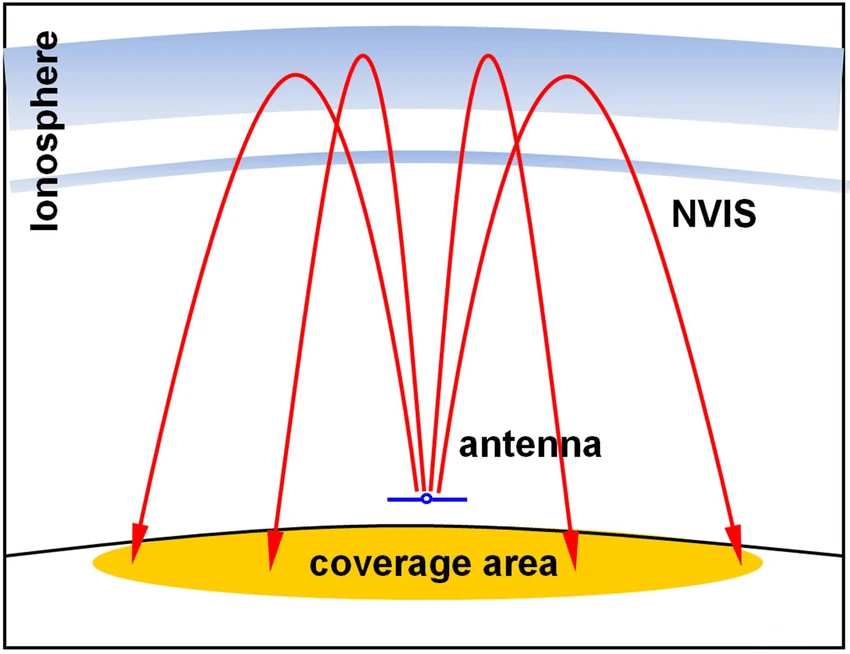

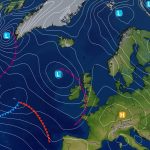
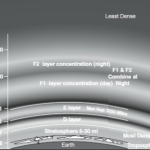


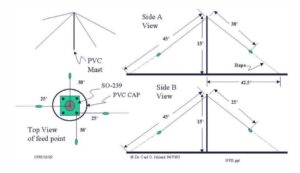
![Read more about the article <h1 dir="ltr" data-pm-slice="1 1 []">REVIEW: NanoVNA Review: A Game-Changer for £50 RF Testing</h1>](https://mm0zif.radio/current/wp-content/uploads/2025/06/Screenshot-2025-06-17-214340-284x300.png)
